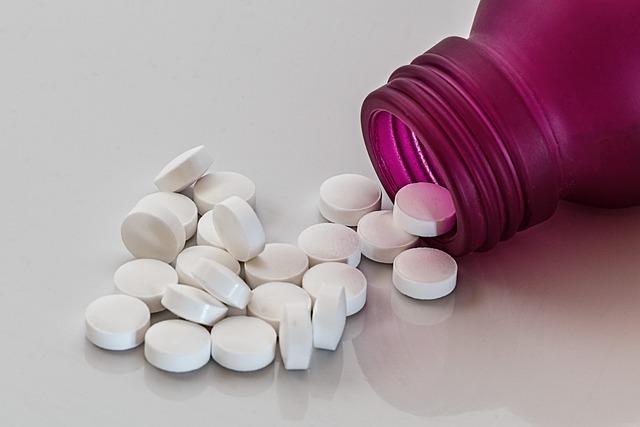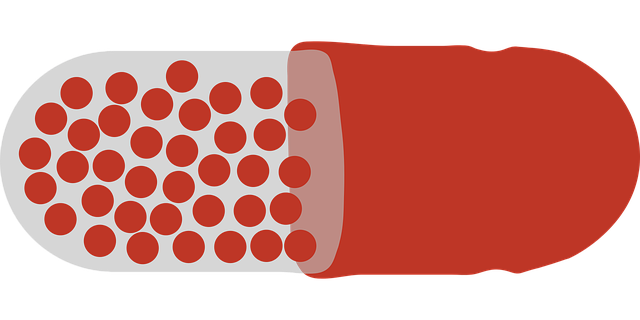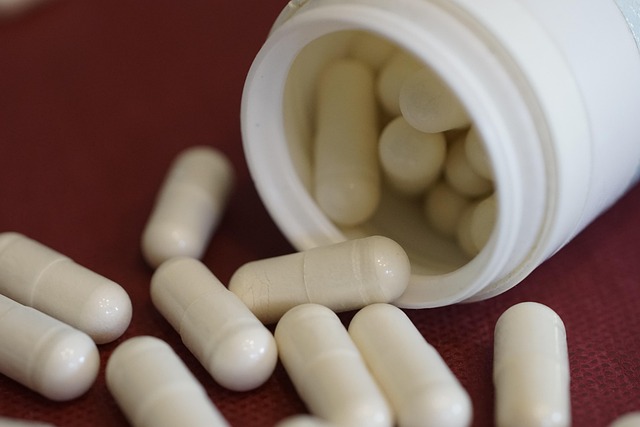The semaglutide medication is a groundbreaking tool in diabetes management, targeting both type 1 and type 2 diabetes. As a GLP-1 receptor agonist, it mimics natural processes to enhance insulin secretion, reduce glucagon release, slow gastric emptying, and manage blood sugar levels effectively. Clinical trials highlight its potential to lower blood sugar, reduce insulin injections, and induce weight loss. However, awareness of side effects like nausea is crucial for optimal use, especially in patients with kidney or liver issues. Dosage adjustments and regular healthcare provider consultation are essential. Ongoing research explores new administration methods, long-term safety, and combinatorial therapies to further enhance diabetes treatment and prevent complications.
“Discover how semaglutide medication is transforming diabetes management. This powerful drug, through its unique mechanisms, significantly improves insulin secretion, offering hope for those living with this chronic condition.
From understanding insulin secretion’s role in diabetes to exploring semaglutide’s actions and clinical trial results, we delve into the benefits, considerations, and future potential of this innovative therapy. Uncover how semaglutide is revolutionizing diabetic care.”
Understanding Insulin Secretion and Diabetes

Insulin is a hormone that plays a pivotal role in regulating blood sugar levels. It’s secreted by the pancreas, specifically by beta cells, and it facilitates the uptake of glucose into our cells, ensuring energy production. In individuals with diabetes, this delicate balance is disrupted. There are two main types: type 1 diabetes, where the body doesn’t produce insulin at all, and type 2 diabetes, characterized by insulin resistance or reduced insulin secretion.
The semaglutide medication has emerged as a powerful tool in managing both forms of diabetes. Semaglutide is a synthetic form of glucose-dependent insulinotropic polypeptide (GIP), which stimulates insulin production by the pancreas. By mimicking and enhancing this natural process, semaglutide helps lower blood sugar levels, making it an effective treatment option for those who require improved insulin secretion to maintain stable glycemic control.
What is Semaglutide?

Semaglutide is a medication that has made significant waves in diabetes management, particularly for individuals with type 2 diabetes. It belongs to a class of drugs known as glucagon-like peptide-1 (GLP-1) receptor agonists, which mimic the effects of a natural hormone in your body. This hormone, GLP-1, plays a crucial role in regulating blood sugar levels by stimulating insulin secretion when needed and suppressing the release of glucagon, which helps to lower blood sugar.
As a semaglutide medication, it is administered via injection and has been shown to improve insulin secretion, making it an effective tool in managing glycemic control. Its ability to slow down gastric emptying also contributes to a feeling of fullness, aiding in weight management, another common challenge for people with type 2 diabetes. This dual action not only improves blood sugar levels but also offers a more holistic approach to treating this chronic condition.
Mechanisms of Action: How Semaglutide Improves Insulin Secretion

Semaglutide, a medication known for its role in diabetes management, improves insulin secretion through multifaceted mechanisms. Primarily, it mimics the effects of the natural hormone GLP-1 (glucagon-like peptide-1), which stimulates insulin release from beta cells in the pancreas. This action is particularly potent after meals when blood glucose levels rise. By enhancing GLP-1’s activity, semaglutide promotes a more effective response to rising sugar levels in the bloodstream.
Moreover, semaglutide slows down gastric emptying, leading to a delayed absorption of food and subsequent reduction in postprandial glucose spikes. This dual effect—stimulating insulin secretion and slowing digestion—contributes significantly to blood sugar control, making it a valuable tool in diabetes treatment and prevention.
Clinical Trials and Research Findings

Clinical trials and research have played a pivotal role in uncovering the potential benefits of semaglutide medication in enhancing insulin secretion. Studies have shown that this innovative therapy can significantly improve glycemic control, particularly in individuals with type 2 diabetes. The mechanism behind its effectiveness lies in its ability to mimic natural gut hormones, leading to increased insulin release and reduced glucagon production.
Through rigorous trials, scientists have demonstrated that semaglutide can lower blood sugar levels, reduce the need for insulin injections, and even lead to weight loss. These findings have opened new avenues in diabetes management, offering a potentially game-changing solution for patients seeking improved insulin secretion and overall metabolic balance.
Benefits of Semaglutide for Diabetic Patients

Semaglutide, a medication that has gained significant attention in diabetes management, offers a range of benefits for patients living with this chronic condition. Its primary mode of action is to enhance insulin secretion, particularly in response to elevated blood glucose levels. This effect is achieved through its ability to activate the glucagon-like peptide-1 (GLP-1) receptor, which plays a crucial role in regulating blood sugar. By stimulating insulin release, semaglutide helps lower blood glucose, providing an effective tool in the fight against diabetes.
Moreover, this medication goes beyond just improving insulin secretion. It also promotes weight loss, making it a valuable asset for diabetic patients who are overweight or obese. The dual action of managing blood sugar and aiding in weight reduction positions semaglutide as a potential game-changer in diabetes treatment. Its benefits have been well-documented, offering hope and improved quality of life for those struggling with this complex metabolic disorder.
Side Effects and Considerations

While semaglutide medication has shown remarkable effectiveness in improving insulin secretion, it’s crucial to be aware of potential side effects. Common adverse reactions include nausea, vomiting, diarrhea, and abdominal pain. These symptoms are usually mild and transient, but they should be monitored. In some cases, these side effects can be managed by adjusting the dosage or timing of meals.
It’s important to consider that semaglutide may not be suitable for everyone, especially individuals with certain medical conditions such as kidney or liver disease. Regular check-ups with your healthcare provider are essential to ensure safe and effective use of this medication. They can help manage any side effects and guide you on the best course of action based on your unique health profile.
Administration and Dosage Guidelines

The administration of semaglutide medication involves a specific dosage strategy for optimal results in improving insulin secretion. This semi-synthetic peptide is typically administered once weekly via subcutaneous injection. The starting dose is often low, around 0.25 mg or 0.5 mg, and can be gradually increased by healthcare professionals based on individual patient responses. It’s crucial to adhere to the prescribed dosage schedule as any deviations might impact treatment effectiveness.
Patients should receive clear instructions on injection techniques from their caregivers or trained medical staff. Regular monitoring of blood sugar levels is essential to ensure semaglutide therapy is working effectively and safely, preventing potential hypoglycemic events. As with all medications, it’s vital to follow the prescribed course and consult a healthcare provider for any concerns regarding dosage or treatment progress.
Future Prospects and Ongoing Research

The future prospects of improving insulin secretion through medication, particularly semaglutide, look promising. Ongoing research continues to explore the potential of semaglutide in various forms, such as injections and even oral administration, aiming to make diabetes management more convenient and accessible. Studies are also delving into its long-term effects, safety profiles, and optimal dosing regimens, ensuring that treatments evolve alongside patient needs. Furthermore, combinatorial therapies utilizing semaglutide with other medications or lifestyle interventions are being investigated, targeting multifaceted improvements in glucose control.
These advancements hold significance for both existing diabetes treatments and future prevention strategies. As research progresses, a deeper understanding of semaglutide’s mechanism of action could lead to the development of novel drugs that mimic its effects but with potentially improved properties. Such innovations have the potential to enhance insulin secretion, reduce complications associated with diabetes, and ultimately improve the quality of life for individuals living with this chronic condition.
